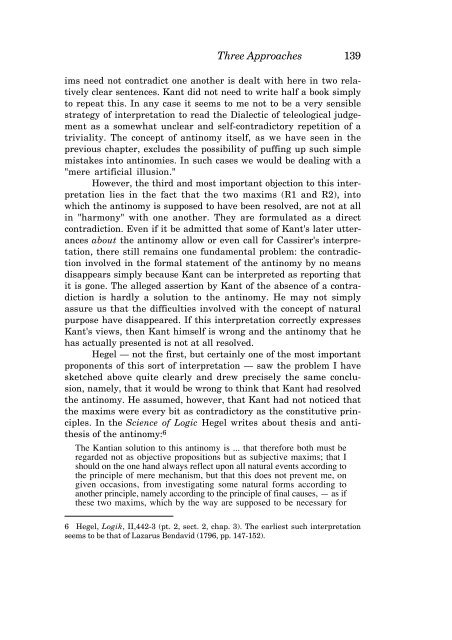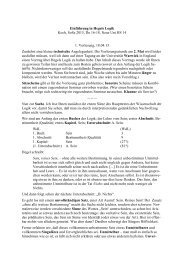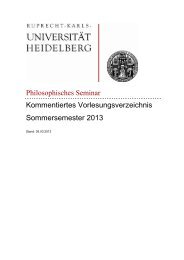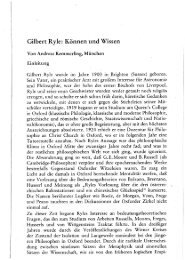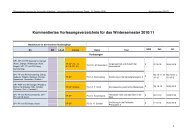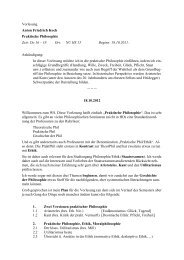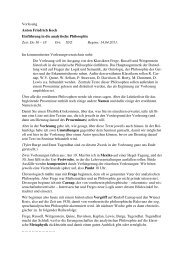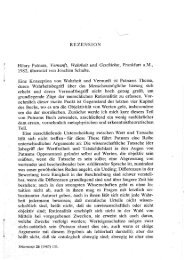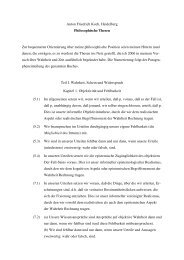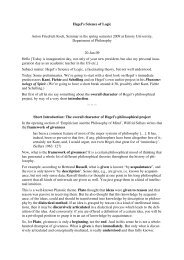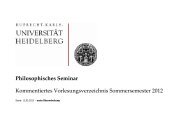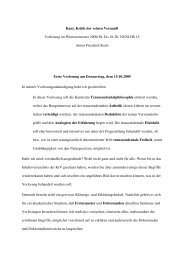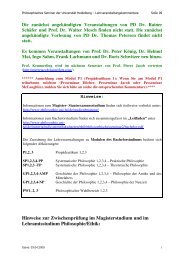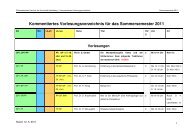KANT'S CRITIQUE OF TELEOLOGY IN BIOLOGICAL EXPLANATION
KANT'S CRITIQUE OF TELEOLOGY IN BIOLOGICAL EXPLANATION
KANT'S CRITIQUE OF TELEOLOGY IN BIOLOGICAL EXPLANATION
Create successful ePaper yourself
Turn your PDF publications into a flip-book with our unique Google optimized e-Paper software.
Three Approaches 139<br />
ims need not contradict one another is dealt with here in two relatively<br />
clear sentences. Kant did not need to write half a book simply<br />
to repeat this. In any case it seems to me not to be a very sensible<br />
strategy of interpretation to read the Dialectic of teleological judgement<br />
as a somewhat unclear and self-contradictory repetition of a<br />
triviality. The concept of antinomy itself, as we have seen in the<br />
previous chapter, excludes the possibility of puffing up such simple<br />
mistakes into antinomies. In such cases we would be dealing with a<br />
"mere artificial illusion."<br />
However, the third and most important objection to this interpretation<br />
lies in the fact that the two maxims (R1 and R2), into<br />
which the antinomy is supposed to have been resolved, are not at all<br />
in "harmony" with one another. They are formulated as a direct<br />
contradiction. Even if it be admitted that some of Kant's later utterances<br />
about the antinomy allow or even call for Cassirer's interpretation,<br />
there still remains one fundamental problem: the contradiction<br />
involved in the formal statement of the antinomy by no means<br />
disappears simply because Kant can be interpreted as reporting that<br />
it is gone. The alleged assertion by Kant of the absence of a contradiction<br />
is hardly a solution to the antinomy. He may not simply<br />
assure us that the difficulties involved with the concept of natural<br />
purpose have disappeared. If this interpretation correctly expresses<br />
Kant's views, then Kant himself is wrong and the antinomy that he<br />
has actually presented is not at all resolved.<br />
Hegel — not the first, but certainly one of the most important<br />
proponents of this sort of interpretation — saw the problem I have<br />
sketched above quite clearly and drew precisely the same conclusion,<br />
namely, that it would be wrong to think that Kant had resolved<br />
the antinomy. He assumed, however, that Kant had not noticed that<br />
the maxims were every bit as contradictory as the constitutive principles.<br />
In the Science of Logic Hegel writes about thesis and antithesis<br />
of the antinomy: 6<br />
The Kantian solution to this antinomy is ... that therefore both must be<br />
regarded not as objective propositions but as subjective maxims; that I<br />
should on the one hand always reflect upon all natural events according to<br />
the principle of mere mechanism, but that this does not prevent me, on<br />
given occasions, from investigating some natural forms according to<br />
another principle, namely according to the principle of final causes, — as if<br />
these two maxims, which by the way are supposed to be necessary for<br />
6 Hegel, Logik, II,442-3 (pt. 2, sect. 2, chap. 3). The earliest such interpretation<br />
seems to be that of Lazarus Bendavid (1796, pp. 147-152).


